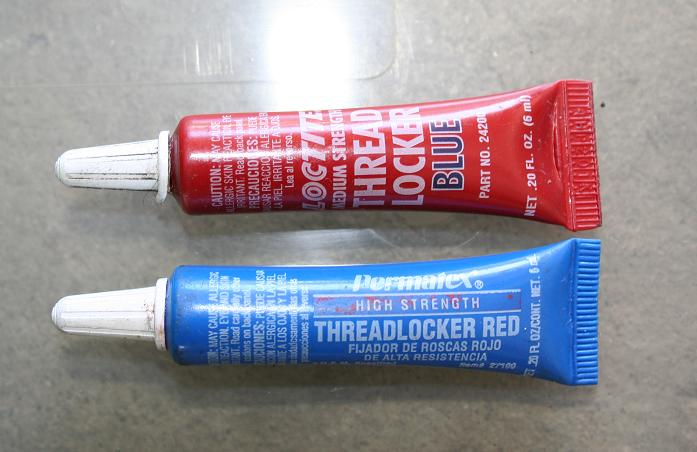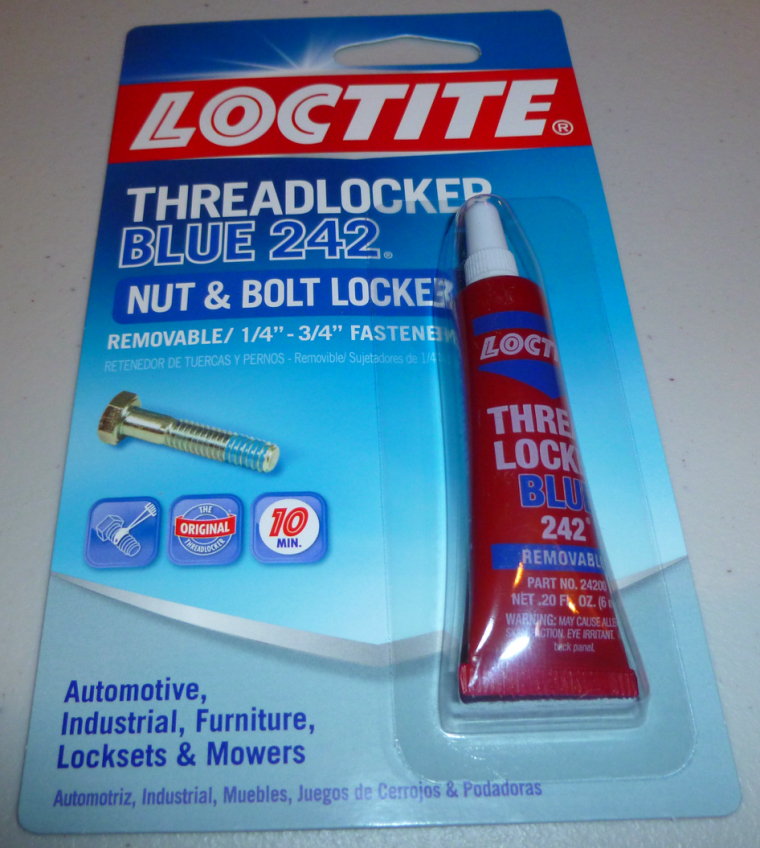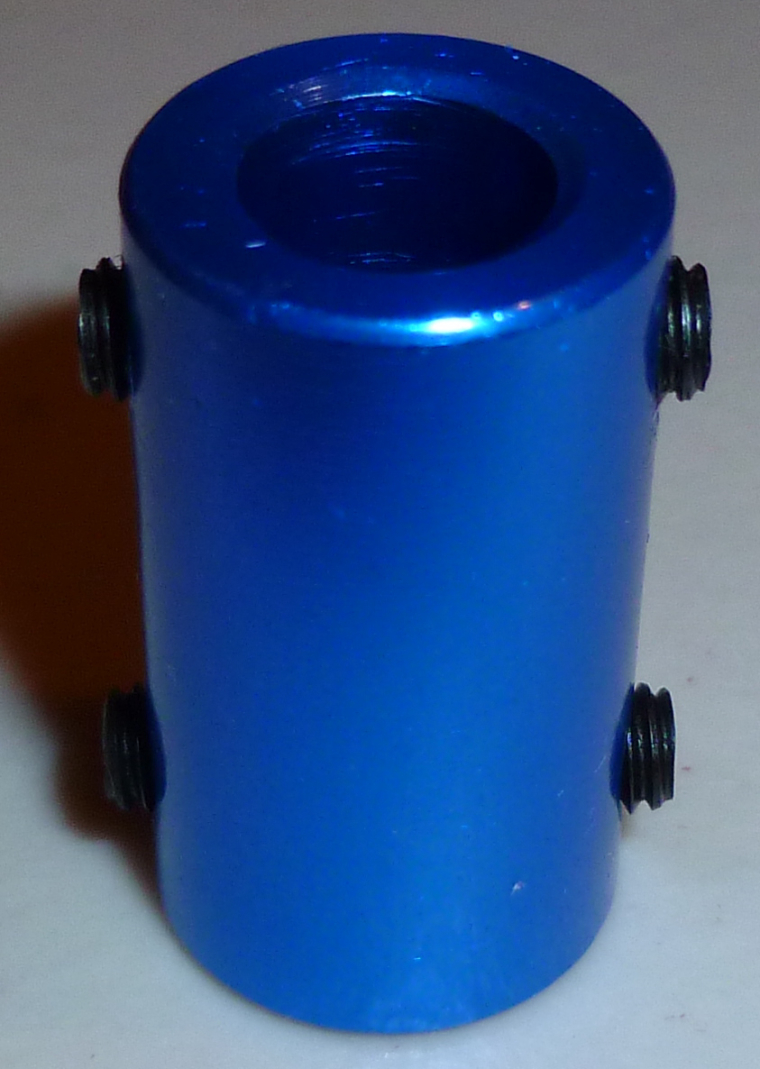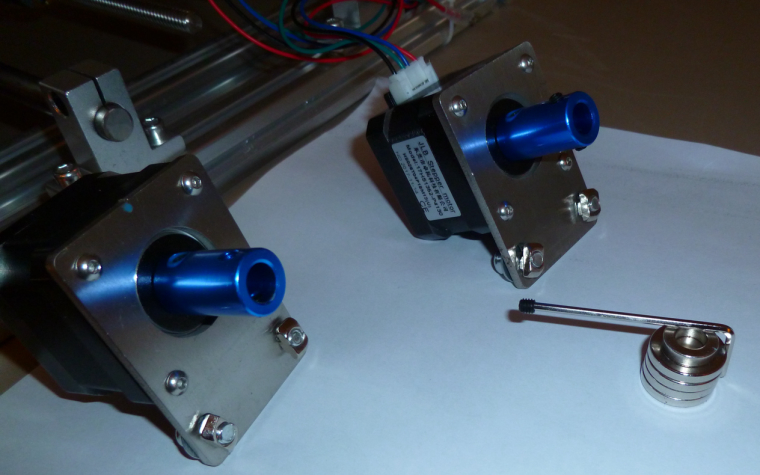CNC PCB milling
-
Well, humbug! I'm all out. Maybe tomorrow I'll buy the red threadlocker, which is even stronger.
-
@neverdie, or anyone else that can answer this with some logic, just because the topic came up. Why does Loctite red come in a blue container and loctite blue come in a red container?

-
Probably historical reasons.
-
@dbemowsk said in CNC PCB milling:
Why does Loctite red come in a blue container and loctite blue come in a red container?
Made in China?
-
Probably a committee decision. Half liked red, and the other half liked blue. They were deadlocked, and this was their compromise decision. :laughing:
-
I don't see any plugs on the woodpecker board that are designated for connecting to a touch plate. So, I guess it's configured using the woodpecker header pins? How is that best set up?
By the way, after re-tightening the set-screws on the adapters used to connect the step-motors to the screw rods, they seem to be holding now and not slipping loose.I take it back, one of them just came loose again. :(@neverdie for the touch sensing you should use A5 connector from the headers, connecting it to the actual tool (bit), then a gnd (header's bottom row) connecting to the pcb's surface.
for the tool connection I use crocodile clamps.
screws: you did not fasten them enough. at the beginning I also missed some endpoints, but since I put the cnc together, I had no issue with any of my screws.
-
@neverdie for the touch sensing you should use A5 connector from the headers, connecting it to the actual tool (bit), then a gnd (header's bottom row) connecting to the pcb's surface.
for the tool connection I use crocodile clamps.
screws: you did not fasten them enough. at the beginning I also missed some endpoints, but since I put the cnc together, I had no issue with any of my screws.
@andrew for first go for a single touch probing instead of a whole autoleveling session.
just for testing purposes, start the touch probing from a higher position and touch the gnd wire directly to the spindle's tool to see whether it stops or not. if not, you should stop it manually from the gui, otherwise it could break the tool.
if everything works well (so you proved that you connections to the pins and the belonging settings are ok), then you can run the simple touch probes or the autoleveling as well. -
@neverdie said in CNC PCB milling:
one of them just came loose again
And now the other one did too. Is anyone using a threadlocker on the set screws to keep this from happening?
I think I'll put on some locktite and let it dry overnight and then see if it still happens tomorrow. I'll start with just the threaded rods.
Anyhow, the good news is that the heat sinks plainly did not short out the GRBL controller boards. I guess the adhesive must act as an electrical insulator.
@neverdie said in CNC PCB milling:
Is anyone using a threadlocker on the set screws to keep this from happening?
For one that will probably buy the same CNC could you document how you solve this with a picture?
-
Probably a committee decision. Half liked red, and the other half liked blue. They were deadlocked, and this was their compromise decision. :laughing:
-
@neverdie for the touch sensing you should use A5 connector from the headers, connecting it to the actual tool (bit), then a gnd (header's bottom row) connecting to the pcb's surface.
for the tool connection I use crocodile clamps.
screws: you did not fasten them enough. at the beginning I also missed some endpoints, but since I put the cnc together, I had no issue with any of my screws.
@andrew said in CNC PCB milling:
you should use A5 connector
Does using A5 somehow automagically just work, or does it require additional software configuration?
-
@neverdie said in CNC PCB milling:
Is anyone using a threadlocker on the set screws to keep this from happening?
For one that will probably buy the same CNC could you document how you solve this with a picture?
@sundberg84 said in CNC PCB milling:
@neverdie said in CNC PCB milling:
Is anyone using a threadlocker on the set screws to keep this from happening?
For one that will probably buy the same CNC could you document how you solve this with a picture?
OK, here is what I'm doing in pictures. I'm applying blue 242 Loctite:

to the threads of the 4 set screws on the coupler:

That should keep them from loosening up after they are screwed into position. Note, you have at most 10 minutes of working time before it sets. -
I applied it to the motor set screws first and let it set:

Note: I used rare earth magnets to help secure the set screw to the allen wrench. That insures that the set screw doesn't drop off and disappear somewhere on the floor. Works great.The couplers are made from anodized aluminum, so I'm not sure how well the loctite will work on them. However, I think it will still work, as the set screws themselves are steel.
-
I found an intro to bCNC:
https://www.youtube.com/watch?v=c-2k48TwU-8It looks easy and intuitive, so I'll probably go with that.
As usual, it's the software that has the best tutorial that wins.
-
I applied it to the motor set screws first and let it set:

Note: I used rare earth magnets to help secure the set screw to the allen wrench. That insures that the set screw doesn't drop off and disappear somewhere on the floor. Works great.The couplers are made from anodized aluminum, so I'm not sure how well the loctite will work on them. However, I think it will still work, as the set screws themselves are steel.
@neverdie I used to use nail varnish on threads as it was just as effective, even though it annoyed the partner whose nail varnish it was. It is not the bond between the metals which is that important, it is adding resistance between the threads to prevent unscrewing, were it to completely bond, you would shear the bolt before it was removed, which is a whole lot of trouble....
-
@neverdie I used to use nail varnish on threads as it was just as effective, even though it annoyed the partner whose nail varnish it was. It is not the bond between the metals which is that important, it is adding resistance between the threads to prevent unscrewing, were it to completely bond, you would shear the bolt before it was removed, which is a whole lot of trouble....
@zboblamont said in CNC PCB milling:
@neverdie I used to use nail varnish on threads as it was just as effective, even though it annoyed the partner whose nail varnish it was. It is not the bond between the metals which is that important, it is adding resistance between the threads to prevent unscrewing, were it to completely bond, you would shear the bolt before it was removed, which is a whole lot of trouble....
Does nail varnish cure anaerobically in the presence of metal ions? That seems to be much of the theory behind thread lockers.
I thought nail varnish cured by evaporation.
In any case, I wiped off the excess loctite, because it might never dry (or, at least, take a long while to do so).
I think the loctite is likely to work, since Andrew had success without anything but torquing it down hard. On the other hand, maybe his is threaded differently than what came in my kit.
-
@andrew said in CNC PCB milling:
you should use A5 connector
Does using A5 somehow automagically just work, or does it require additional software configuration?
@neverdie said in CNC PCB milling:
@andrew said in CNC PCB milling:
you should use A5 connector
Does using A5 somehow automagically just work, or does it require additional software configuration?
it should work by default
-
@zboblamont said in CNC PCB milling:
@neverdie I used to use nail varnish on threads as it was just as effective, even though it annoyed the partner whose nail varnish it was. It is not the bond between the metals which is that important, it is adding resistance between the threads to prevent unscrewing, were it to completely bond, you would shear the bolt before it was removed, which is a whole lot of trouble....
Does nail varnish cure anaerobically in the presence of metal ions? That seems to be much of the theory behind thread lockers.
I thought nail varnish cured by evaporation.
In any case, I wiped off the excess loctite, because it might never dry (or, at least, take a long while to do so).
I think the loctite is likely to work, since Andrew had success without anything but torquing it down hard. On the other hand, maybe his is threaded differently than what came in my kit.
@neverdie Torquing down correctly normally prevents threads unwinding, but have seen bolts come loose with vibration on occasion. Only ever used loctite or equivalent on cylinder head bolts, particularly alloy heads, it never actually sets solid and is oil etc resistant.
Although lacquer or plastic paints do harden, as a plastic filler between the threads, it increases contact friction, yet will shear to permit removal of the bolt when necessary. Typical threads do not fully engage metal to metal, the clearance is essential to allow the nut to be run on the bolt.
Loctite is fine if you have it already, nail varnish works fine for me in non oily scenarios. -
I've retried it now, and so far it's not coming lose. :)
I added some machine oil on the rods and screws, and that seems to have helped. Before that, there were some areas where the screw rod on the y-axis was binding, but not now.
